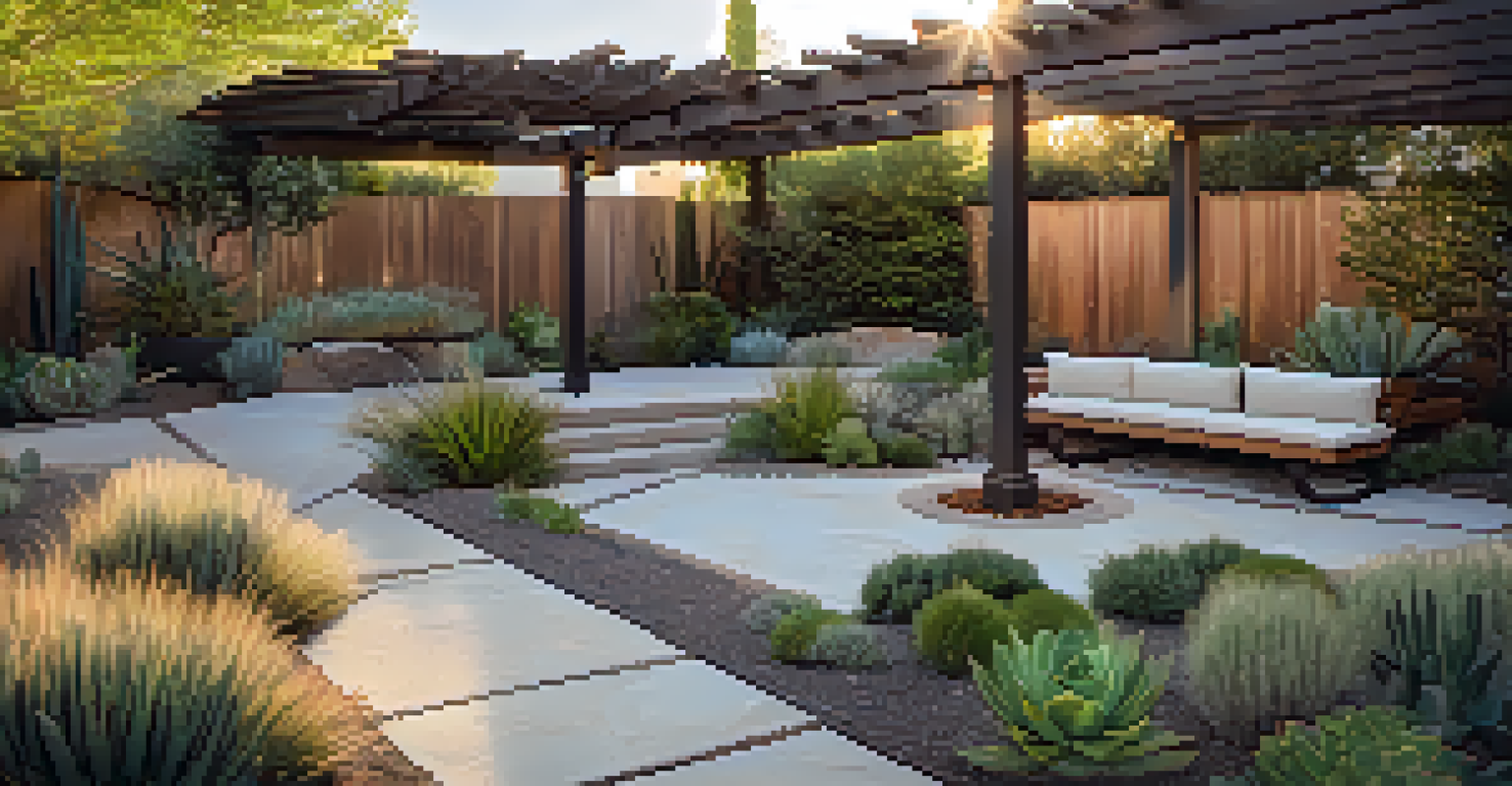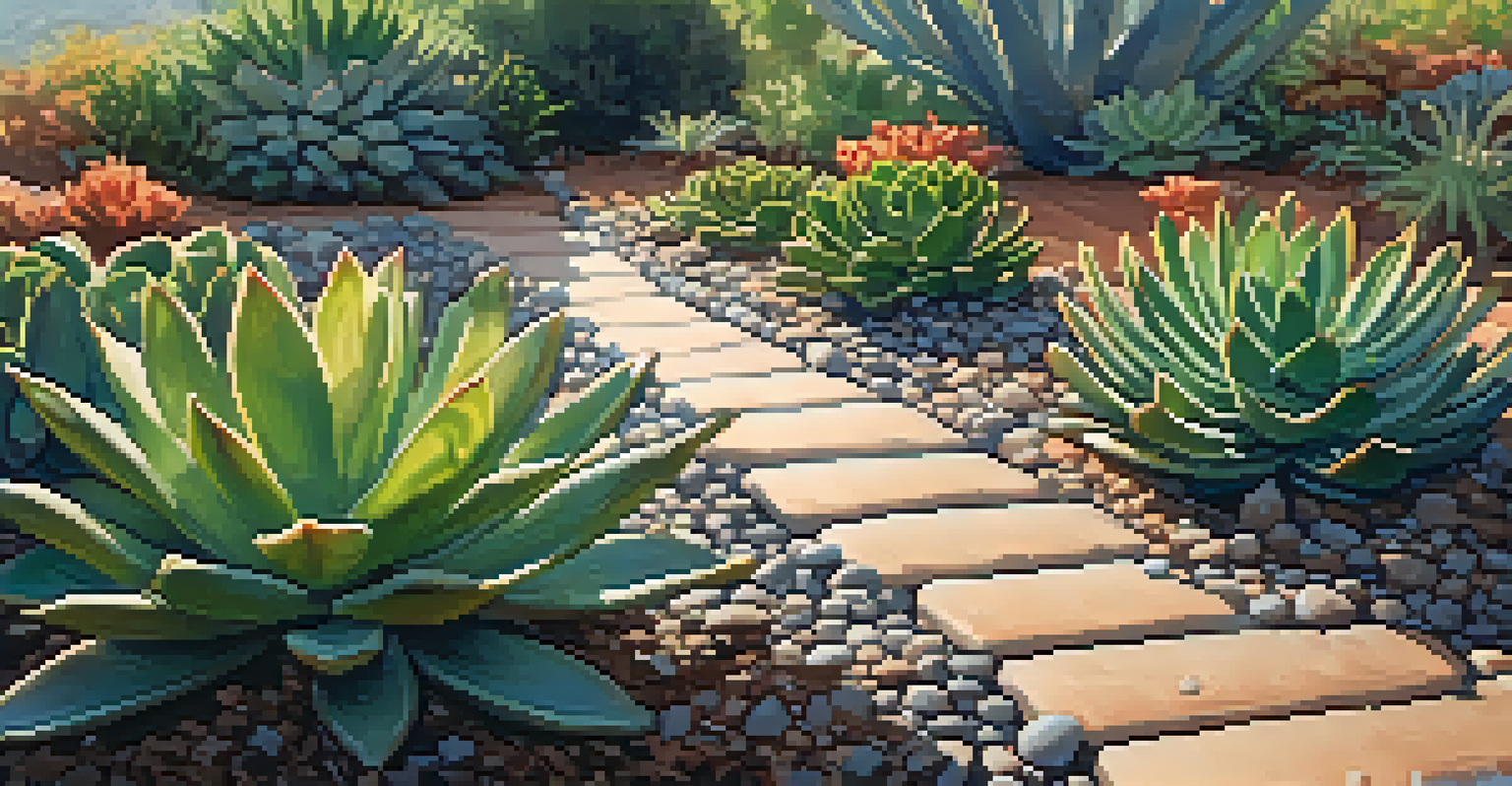Drought-Tolerant Landscaping: A Sustainable Solution

Understanding Drought-Tolerant Landscaping Basics
Drought-tolerant landscaping focuses on designing outdoor spaces that require minimal water. This approach uses native plants and materials that thrive in dry conditions, ensuring your garden remains vibrant without constant watering. By understanding the local climate and soil types, homeowners can create a landscape that flourishes even during droughts.
The best time to plant a tree was 20 years ago. The second best time is now.
Imagine a garden where vibrant colors and textures flourish despite the scorching sun. This is not only possible but also practical with drought-tolerant plants, which are adapted to survive on little water. Choosing the right plants, like succulents or native grasses, can transform your yard into a stunning oasis while conserving water.
Moreover, this method isn’t just beneficial for your garden; it positively impacts the environment. Reduced water usage means less strain on local water supplies and ecosystems, making drought-tolerant landscaping a responsible choice for conscientious homeowners.
Benefits of Drought-Tolerant Landscaping
One of the most compelling benefits of drought-tolerant landscaping is its low maintenance requirements. Once established, these landscapes typically need less pruning, weeding, and watering compared to traditional gardens. This means you can enjoy a beautiful yard without the constant upkeep, freeing up your time for other activities.

Additionally, drought-tolerant gardens can significantly lower your water bills. With the increasing costs of water, especially in arid regions, this approach not only conserves this precious resource but also saves you money in the long run. Who wouldn’t want to keep their garden lush while saving a few bucks?
Low Maintenance, High Impact
Drought-tolerant landscaping requires minimal upkeep while enhancing the beauty of your outdoor space.
Lastly, creating a drought-tolerant landscape can enhance your property’s value. Homebuyers are increasingly looking for sustainable features, and a yard designed with water conservation in mind can be a major selling point. It’s a win-win situation where you invest in your home’s value while being environmentally responsible.
Choosing the Right Plants for Your Landscape
Selecting the right plants is crucial for a successful drought-tolerant landscape. Native plants are your best friends here, as they’re already adapted to your local climate and soil conditions. For example, if you live in a dry region, consider using plants like lavender or yucca, which thrive without much water.
Nature does not hurry, yet everything is accomplished.
In addition to native species, think about incorporating drought-resistant varieties. These plants, such as ornamental grasses or succulents, can add interesting shapes and colors while requiring minimal water. Mixing different types of plants can also create a diverse and visually appealing landscape.
Don’t forget to consider the layout and grouping of your plants. Placing drought-tolerant plants in clusters can help create a more cohesive look and make watering easier if needed. This strategic planning will not only enhance the aesthetic of your garden but also optimize its water efficiency.
Incorporating Hardscaping Elements
Hardscaping refers to the non-plant elements of landscaping, such as patios, walkways, and retaining walls. Incorporating hardscaping into your drought-tolerant design can significantly enhance its overall appeal and functionality. For instance, a stone pathway can create an inviting atmosphere while reducing the need for grass.
Moreover, hardscaping materials can help with water management. For example, permeable pavers allow rainwater to seep into the ground, reducing runoff and promoting groundwater recharge. This clever integration helps maintain a healthy ecosystem even in arid conditions.
Save Water and Money
Implementing drought-tolerant practices can significantly reduce water bills and conserve this precious resource.
In addition to functionality, hardscaping can add visual interest to your landscape. By combining different materials and textures, you can create a unique design that complements your home’s architecture while providing practical benefits.
Water Conservation Techniques for Your Garden
Implementing water conservation techniques is vital for maintaining a drought-tolerant landscape. One effective method is using mulch, which helps retain moisture in the soil and reduces evaporation. A layer of organic mulch not only keeps your plants hydrated but also suppresses weeds, making your garden easier to manage.
Another technique is to utilize drip irrigation systems, which deliver water directly to the roots of your plants. This method minimizes water waste and ensures your plants receive the moisture they need without overwatering. It’s a smart solution that can be tailored to fit any garden size or layout.
Lastly, consider collecting rainwater in barrels or cisterns. This eco-friendly option allows you to store water during rainy periods for use in dry spells. By harnessing nature’s bounty, you can keep your garden thriving while reducing your reliance on municipal water sources.
Designing Your Landscape for Aesthetic Appeal
A drought-tolerant landscape doesn’t have to sacrifice beauty for sustainability. In fact, with thoughtful design, you can create a stunning outdoor space that showcases the natural beauty of drought-resistant plants. Consider using various colors, shapes, and sizes to create a visually engaging garden that captures attention.
Incorporating focal points, such as decorative boulders, sculptures, or water features, can elevate the aesthetic appeal of your landscape. These elements not only draw the eye but also provide a sense of tranquility and structure. When thoughtfully placed, they can enhance the overall harmony of your garden.
Sustainable Design for the Future
Embracing drought-tolerant landscaping contributes to environmental conservation and prepares us for climate challenges.
Finally, remember that seasonal changes can add depth to your landscape. Choose plants that bloom at different times of the year, ensuring that your garden remains vibrant throughout all seasons. By planning for seasonal interest, your drought-tolerant garden can be a source of joy and beauty year-round.
The Future of Drought-Tolerant Landscaping
As climate change continues to impact weather patterns, the importance of drought-tolerant landscaping will only grow. More homeowners are recognizing the need for sustainable practices that conserve water and enhance resilience against extreme weather. This shift towards eco-friendly gardening is not just a trend but a necessity for the future.
Moreover, advances in horticulture and landscape design are making it easier to implement these sustainable solutions. New plant varieties and innovative landscaping techniques are emerging, allowing for even more creativity in drought-tolerant designs. This evolution means that anyone can create a beautiful, sustainable landscape tailored to their specific needs.

Ultimately, embracing drought-tolerant landscaping is a step toward a more sustainable future. By making conscious choices about our gardens, we can contribute to environmental conservation while enjoying the beauty and serenity of nature. It's a powerful reminder that even small changes can have a significant impact.